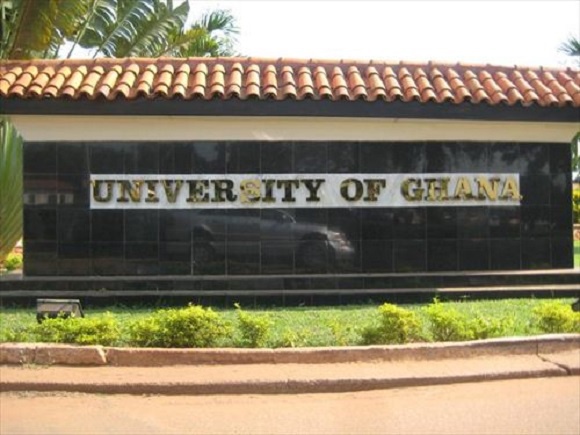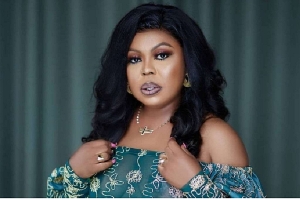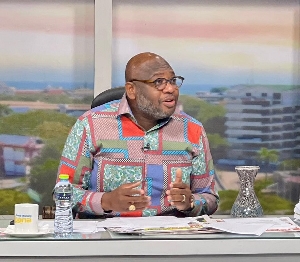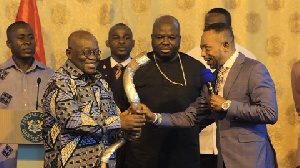 Paul Adom-Otchere is the host of Good Evening Ghana on Metro TV
Paul Adom-Otchere is the host of Good Evening Ghana on Metro TV
The mention of Dr JB Danquah as probable founder of the University of Ghana has provoked more than enough reaction in both traditional and social media. The reactions have been towards a correction of the historicity of Legon, to say that Dr Danquah wasn’t the founder, others have said the role played by Danquah towards the establishment of the university was also played by Prof Christian Beata.
Some have also said that the actual history of the university should point us to the role of cocoa farmers as opposed to any individual because it was money from the cocoa farmers that was applied as seed capital to set up the university.
Before we directly confront the actual history to determine the historicity of the University in order to allocate roles and situate personalities, let us consider the reason or reasons for naming institutions after personalities as has occurred here in Ghana and elsewhere.
As it is, society makes an effort to remember the work of distinguished personalities through imortaliz-ing their names by naming monuments and places of repute or of regular usage after such personali-ties. In many of such instances, these place of repute may be created even after the death of the ven-erable person after whom it is named. So the British have named train lines after Queen Victoria and the Americans have named an airport after John Kennedy their famous president. Here in Ghana we have also named the airport after Gen Kotoka even though he didn’t build it.
The other basis of naming monuments after personalities is to recognize their direct contribution to the establishment of such monuments or even nations. So it is believed that the nation Kenya was named after Jomo Kenyatta who played an instrumental role in creating independent Kenya. In science and technology, solutions have borne the names of their originators from medicine to automobiles. Thus, a monument may be named after a person for two reasons, either to immortalize the name or to give credit where it is due or actually both.
Recently, President Akufo-Addo has named two academic institutions of monumental sizes after two of our statesmen, the colossal Paa Grant, co-founder of the historical UGCC and Dr Lihman, the presi-dent of the 3rd Republic... Both Academic institutions, the Takwa School of Mines and the Wa poly-technic were established long after both Paa Grant and Dr Lihman had died. Also the University of Sce-ince and Technology, originally the Kumasi Technology College, first named after Dr Nkrumah, changed at some point and later restored by an act of the second parliament of the fourth republic in 1998.
The source of the historicity of the University Of Ghana
During the discussion, the main source record that has been relied upon by proponents is the 381 page book entitled “A history of the University of Ghana “written by Prof Francis Agbodeka, a historian of high repute who began his teaching career at the Adisadel College before joining the team at the Uni-versity of Cape Coast where he became pro vice chancellor from 1974 to 1978. The book was commis-sioned by the university upon its 50th Anniversary in 1998.
The story on who did what, Bradley Committee, Dr Danquah, Prof Baeta, the Asantehene and Cocoa Farmers.
So the story is told in the book from pages 10 onwards under the topic “Antecedents of University Edu-cation in Ghana”. The drama unfolds from December 1945, as the British colonial authority decide to set up a university for the West African colonies. The colonial authority chooses Nigeria as the location for such a grand idea. According to the story on page 12 of the book, this idea of locating a university for the entire West Africa in Nigeria created unrest, its says “ in the case of the Gold Coast , even while the commission was sitting, a petition was sent to it indicating that the Gold Coast was anxious to have its own university college.” The petitions were submitted by various bodies including, Advisory Com-mittee on Education, Joint Provincial Council of Chiefs, Asante Confederacy Council , Gold Coast Bar Association , Old Students Association , Rodger Club ,Gold Cost Teachers Union . It is widely believed that most of these memoranda were actually drafted by Dr Danquah for the various associations. At the time Dr Danquah had gained prominence especially among the Ashantis and in particular with the Asantehene for the work he did to convince the Ashantis to reject the separate legislative assembly in Kumasi called the Ashanti advisory council (proposed by the British) but rather join the colony towards a United Gold Coast under a single legislative assembly based in Accra. The story continues that even-tually there was agreement (by the Bradley Committee) that there would be a separate university col-lege in Gold Coast.
Two reasons why the argument for a separate Gold Coast University won the day.
1. Achimota School
The existence and success of Achimota school plus the clamor for it to be upgraded to a university col-lege was a key enabler to the argument for a separate university college of the Gold Coast. Still on page 12 “ most petitioners confined themselves to stressing the desire for a separate university for the Gold Coast , indicating their strong preference for the development of the laudable advances in higher education made in this country .. By laudable advances, they were referring to the achievements of Achimota which had been a source of pride to the people and a powerful influence throughout the country."

2. Willingness of the Asantehene and his cocoa farmers to provide re-sources.
Once the argument had been settled based on forethought expressed by the petitions, the next matter to settle was the resources with which to establish the university college. The obvious source was co-coa money from Cocoa farmers. At the time in the late 1940’s almost all of the cocoa farms and cocoa business was in Ashanti. The Asantehene was then invited to play a pivotal role. On page 13 the story continues“the committee sent a delegation to Kumasi to convince the Asantehene to agree to one university in Accra on the grounds that if the country stood divided on this issue, it would damage the Gold Coast’s chance of getting a university college at all. After some initial difficulties, the Asantehene decided that he would agree to a university in Accra particularly as the delegation promised that the committee will do its best to get a college for tertiary education established in Kumasi “ . The idea then was to levy Cocoa farmers to accumulate funds for the building the university college. The story con-tinues still on page 13 ... “two members of the legislative council, Dr Danquah and Prof Baeta, on their own volition worked on this question of securing funds for the project. Danquah, for instance was seen educating farmers around the country so that they might willingly contribute to the project “. That’s the story of bringing the farmers on board, Danquah went round the country on his own to convince the farmers to pay; 897, 000 pounds sterling was raised through Danquah’s effort.
Role of cocoa farmers recorgnised in 1953
In 1953, when it was time for the second ever hall of residence to be constructed, it was named the Akuafo Hall, the role of Cocoa farmers was given pride of place in the naming of this hall, the Akan word Akuafo means farmers. Students of the hall are nicknamed farmers till this day. Professor Agbodeka’s account in our source book captures (on page 91) the glorious moment of the opening of Akuafo Hall attended by Dr. Kwame Nkrumah, then as leader of government business, at that time, the highest ranking elected African in the government
Danquah’s singular contribution to convince Asante and the cocoa farmers to pay towards the university
Whilst the original forethought to challenge the colonial authority’s decision to set up a West African university in Nigeria was led by Danquah and put out in petitions, the story shows Danquah leading the charge to secure the necessary resources that were required to make the idea happen. On page 13 the writer distinguishes between the work of Prof Baeta and Dr Danquah by indicating that Danquah trav-eled round the country to engage cocoa farmers directly. Of course, Danquah could do that because he was quite popular with the farmers, (having led them in the famous Cocoa hold ups of the late 30’s and early 40’s and which had led to an increased producer price) and was also good with the Asantehene having convinced him on many key political matters including getting him to reject the idea of the Ashanti Advisory council. Further on page 105 of the book under the title Financial Administration of the University , the writer says “ in 1948, the CMB gave the college 896,714 pounds sterling following Dr Danquah’s appeal to the cocoa farmers and the legislative councils support for the scheme “ . On page 105, the writer attributes the role of the farmers solely to the convincing work of Danquah.
The university website names Danquah as the pivotal force behind its establishment
This discussion would be incomplete if we do not identify the university own view if its founders or founding narrative. As it turns out, the university has on its website, provided a narrative of its own his-tory, after narrating the original idea to put up a university in Nigeria for the entire west Africa, it con-tinues as follows ‘the British government at first accepted the minority report of the Elliot Commission and decided that a university college for the whole of British West Africa should be established at Ibadan Nigeria. But the people of the Gold Coast could not accept this recommendation, led by Scholar and later Politician J.B Danquah, they urged the Gold Coast government to inform the British gov-ernment that the Gold Coast could support a university college. The British gov-ernment accordingly reviewed its decision and agreed to the establishment of the university college.’
Opposing arguments to re-naming Legon after Danquah.
Some have said that the narrative does not support that fact that Dr Danquah was the founder of the university but that if anyone was the founder then it was the cocoa farmers of the day. The cocoa farm-ers and the Asantehene played a significant role with their money, the arguments for a university pre-ceded the money and also the level of convincing that had to be done which eventually achieved two universities was really the pivotal effort of Danquah. The cocoa farmers were responsible for both Legon and UST as it is, but we have named UST after Dr Kwame Nkrumah who played no actual role in its formative thoughts. We accept the naming of UST after Dr Nkrumah for it is indeed a befitting me-morial to our famous first President.
If therefore, we have to credit any individual for the work done towards our first university, it has to be the thought leader and active campaigner Dr JB Danquah. He deserves such a monument for it will teach posterity the virtues of patriotism and sacrificing for one’s nation. Danquah deserves it!!!
Dr Nkrumah’s autobiography
It was with much disappointment that we observed that DR Nkrumah’s autobiography of 310 pages de-tailing activities from 1909 when he was born until the independence victory in 1957 did not mention the formative years of the university of Ghana nor the university of science and technology which is now named after him. This is so even though the account shows that Nkrumah engaged with and his government supported the university in many ways, its true that the history of Ghana has many strands to it and the entire narrative reveals all men and women who played various roles to make Ghana hap-pen in the Glorious way that it did.
- UGMC was established to stop public officials from travelling abroad for health care – Mahama
- UGMC risks losing government's financial clearance
- UGMC to open next year after govt agree on ownership formula
- UG Medical centre to operate next year after gov’t agrees to ownership formula
- UG Medical Centre to recruit additional 2,000 workers – Health Minister
- Read all related articles












